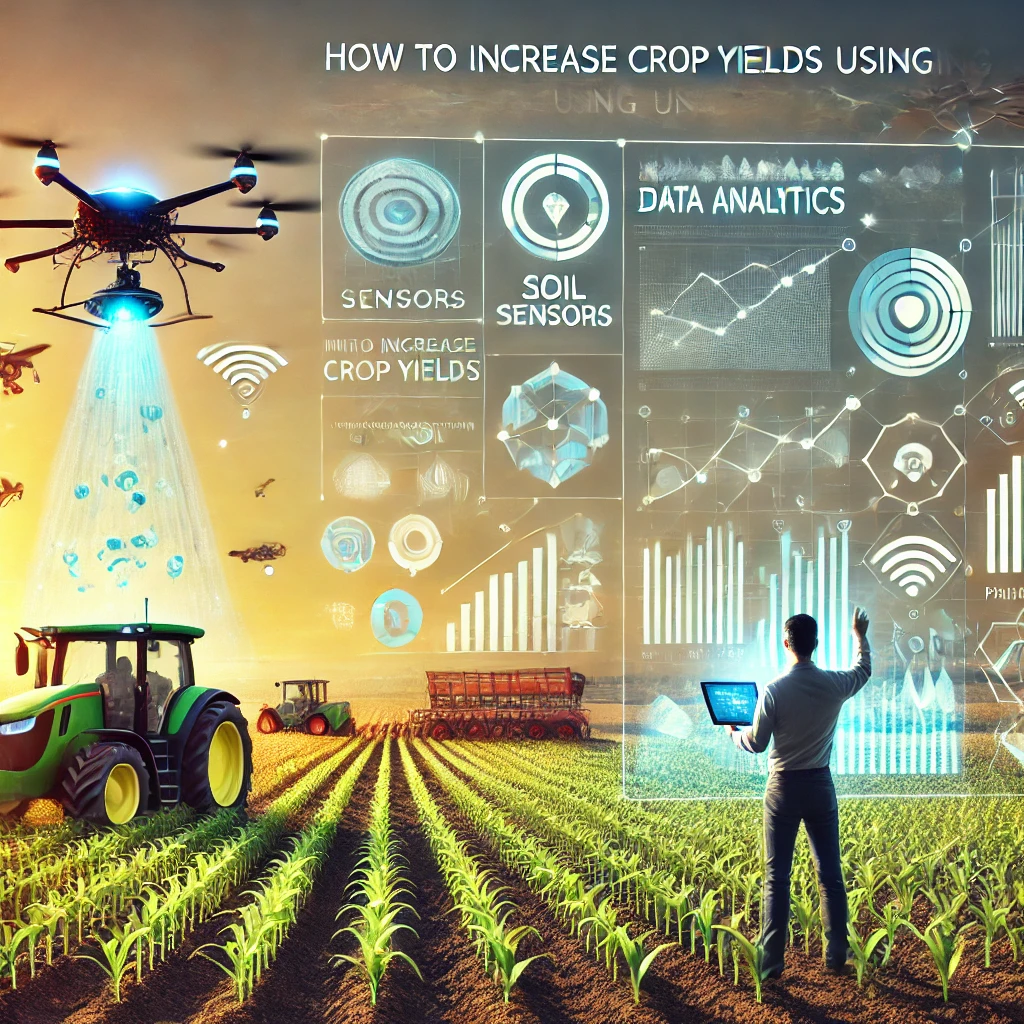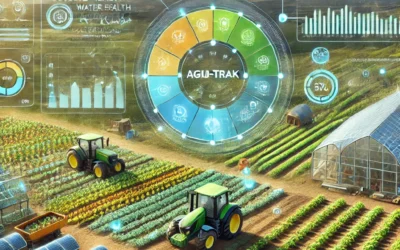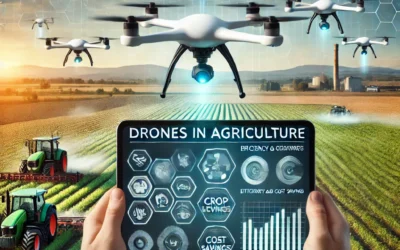In today’s rapidly evolving agricultural landscape, data has become a powerful tool for increasing crop yields. Data analytics, when applied correctly, helps farmers make informed decisions about planting, irrigation, fertilization, pest control, and harvesting. By analyzing data from various sources, such as soil sensors, satellite imagery, and weather forecasts, farmers can optimize their operations to achieve higher productivity. This article will explore how farmers can use data analytics to increase crop yields.
1. Understanding the Role of Data in Agriculture
Data analytics involves collecting, processing, and analyzing large amounts of information to uncover patterns and trends. In agriculture, data comes from multiple sources: soil sensors that measure moisture and nutrient levels, weather stations that track environmental conditions, and drones or satellites that monitor crop health. When combined, this data provides farmers with a comprehensive understanding of their crops, allowing them to make more informed decisions.
For example, analyzing soil data can help farmers determine the optimal time to plant crops, based on factors such as moisture levels, nutrient availability, and pH balance. This ensures that seeds are planted in the best possible conditions, leading to healthier crops and higher yields.
2. Optimizing Irrigation with Data
Water is a critical factor in crop growth, and efficient irrigation is essential for maximizing yields. Data analytics can help farmers optimize irrigation by providing real-time information on soil moisture levels and weather forecasts. With this data, farmers can adjust their irrigation schedules to ensure that crops receive the right amount of water at the right time.
Smart irrigation systems, powered by data analytics, can automatically adjust water levels based on soil conditions and weather patterns. This not only conserves water but also prevents over- or under-watering, both of which can harm crop yields. By using data to fine-tune irrigation, farmers can ensure that their crops remain healthy throughout the growing season.
3. Precision Fertilization Through Data Analysis
Fertilizer is a key input in crop production, but applying it uniformly across a field can lead to inefficiencies and waste. Data analytics allows farmers to implement precision fertilization, where fertilizer is applied only in areas that need it. Soil sensors and drones can detect variations in nutrient levels across a field, allowing farmers to target specific areas with the right amount of fertilizer.
By applying fertilizers more accurately, farmers can increase crop yields while reducing costs and minimizing environmental impact. This precision approach also helps prevent over-fertilization, which can lead to nutrient runoff and soil degradation.
4. Pest and Disease Management
Pests and diseases can have a devastating impact on crop yields, but early detection and intervention are key to minimizing damage. Data analytics enables farmers to monitor their fields for signs of pests or diseases in real time. Drones equipped with multispectral cameras can detect subtle changes in plant color, which may indicate a pest infestation or disease outbreak.
With this information, farmers can take swift action to address the issue before it spreads, using targeted treatments that minimize chemical use. Early intervention, guided by data, not only protects crops but also improves overall yields.
5. Predictive Analytics for Better Planning
Predictive analytics uses historical data and algorithms to forecast future events, such as weather patterns, crop performance, and market trends. In agriculture, predictive analytics can help farmers plan their operations more effectively, from choosing the best time to plant to predicting optimal harvest windows.
For example, by analyzing past weather data, farmers can anticipate periods of drought or excessive rainfall and adjust their planting schedules accordingly. Similarly, predictive models can help farmers estimate the likely yield of their crops, enabling them to make more informed decisions about selling and storage.
Conclusion
Data analytics is revolutionizing the way farmers approach crop production, offering new opportunities to increase yields, reduce waste, and improve efficiency. By leveraging data to optimize irrigation, fertilization, pest management, and planning, farmers can ensure that their crops are healthy and productive throughout the growing season. As the agricultural industry continues to evolve, embracing data-driven practices will be essential for meeting the growing global demand for food.








